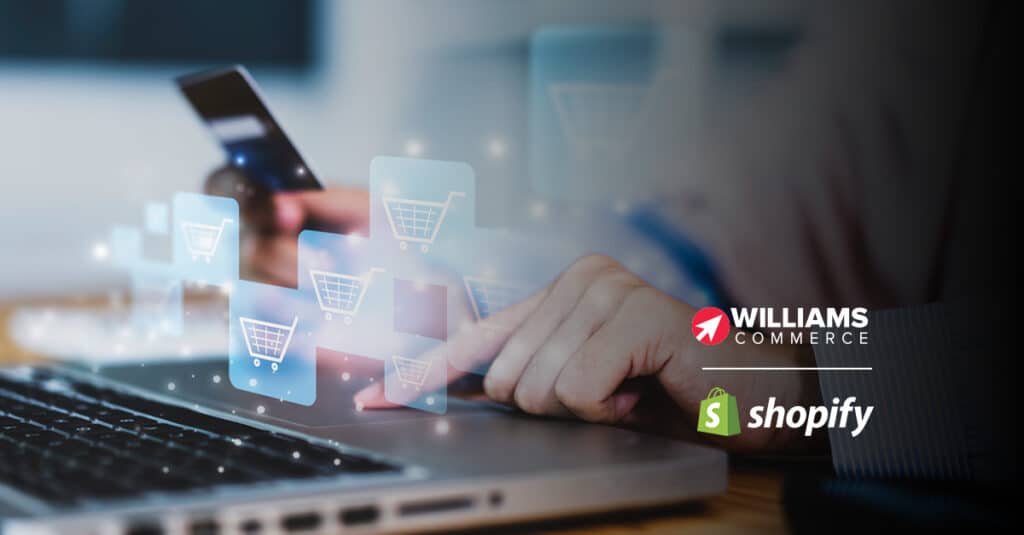Hybrid commerce is a practical, economic and logistical trend that is affecting retailers and business to business (B2B) companies alike. Combining digital channels, in-store experiences, fulfillment and inventory management makes good business sense.
As economic uncertainty and inflation affect economies around the world many organizations are reviewing how they add value for their customers and their market position in respect to pricing and quality. Manufacturers, distributors and retailers are all reviewing their efficiency and effectiveness and those who sell directly to end users are becoming hyper-sensitive to their needs.
What is hybrid commerce?
The logical next step from omnichannel commerce, hybrid commerce includes every part of the value chain from customer touchpoints to product development, manufacturing, logistics and warehousing.
While customers will continue to research products online using mobile devices, apps and voice, they might want to see them via augmented or virtual reality tools or visit a store or showroom before making their choice. They might buy online to pick up in store (BOPIS) or engage with your sales professionals in-store, via the telephone or a chatbot before placing an online order.
Hybrid commerce involves more than adding more options for your customers to choose. Their preferences will also affect storage and warehousing requirements as manufacturers and distributors consider the cost and environmental impact of transport.
Speed and efficiency will also save money in a complex environment where inflation is becoming a strategic consideration. Now that we can access and use Big Data in near real time personalization, responsiveness and flexibility will be key differentiators in a hybrid commerce world.
Buying behavior
Understanding your customers’ preferences using data collection tools and technologies will become a priority. However, creating useful and actionable insights requires careful analysis and interpretation. The goal is to understand what motivates them to make their buying decisions.
Ecommerce practitioners already understand the importance of data-driven marketing strategies and they are embracing technologies that help them to understand where brand and market demand meet. This is a good place to start, but the next step for hybrid commerce is to create a cohesive business strategy based on both current and future needs and expectations.
Data-based planning
Effective use of data is at the heart of building a future-focused brand that will generate and maintain customer demand. Cross-over between traditional marketing, management and strategic disciplines will be needed to create truly hybrid commerce organizations.
Soft data such as click through rates and customer journeys on your ecommerce website can be combined with hard data about sales, returns and profitability to create a more in-depth understanding of your business activity. Setting targets, measuring behavior and analyzing costs and efficiency will all play their part in creating focused and targeted plans.
To do this effectively you will need a single source of accurate business data that can be comprehensively and accurately interrogated and understood.
Meeting modern challenges
More than ever, your success will depend on how quickly you can adapt to customer needs and their changing expectations.
Micro-warehousing – a major challenge will be to make sure brick-and-mortar retail spaces can maintain profitable sales per square foot. Micro-warehousing allows you to convert portions of your sales floor into small warehouses to support fulfilment of online orders for hybrid commerce.
This can improve efficiency, simplify inventory management, and avoid problems associated with customers and fulfillment teams competing for the same items in your store. It also helps with the challenges of last-mile deliveries, helping to reduce your carbon footprint and contributing towards sustainability goals. You can use modern automation solutions to support employees in order picking or robots for inventory storage and fulfilment in these small areas.
Automation – your checkout area is a significant operating expense. With a hybrid approach you can mix conventional checkouts and in-store self-service options. Combined with a smaller sales floor area and a reduced number of products on display you can then redeploy your staff to other value-added functions. You could even offer around-the-clock access via an app so that customers can enter your store and pay at a self-service checkout during off-peak periods.
Collection options – smart lockers and vending machines for online orders can be shopping touchpoints or ‘click and collect’ solutions. Added functions such as digital displays can deliver promotional content and you can enable automatic sensor-based inventory management. These can include refrigerated storage for groceries or package management software supported by an app so customers have control from purchase through to collection or return.
Smart stores – there have already been successful trials of ‘grab & go’ stores using sensors to identify customers and track the movement of products. Your customers can check availability online then visit your store to simply select what they want and leave. They will be tracked using ceiling-mounted cameras, smart shelves and scales, and internet of things (IoT) solutions to collect and interpret sensor data using artificial intelligence (AI) technology that allows them to be automatically billed.
Seamless experiences
In a hybrid commerce environment, your customers can move seamlessly between online and offline shopping and access consistent new additional services and innovations based on their preferences.
This might include subscription options, live stream events, automatic reordering via smart home appliances, and product experiences via augmented reality or at their local store. Most importantly, they will discover new, exciting and creative ways to combine all of these options.
Start your hybrid commerce journey today
The team at Williams Commerce has delivered ecommerce solutions to all types of companies across multiple sectors for over a decade. We understand how and why technologies are converging and we can advise you on the next steps in your hybrid commerce journey.








